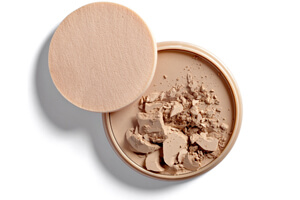Achieving a Standard Color in Cosmetic Foundations
Sadly, for years, there were only limited shades of foundations. However and happily, in today’s world, there are many different shades, made with different ingredients to appeal not only to a consumer’s eye for color but potentially to their social consciousness as well. With the increase in the pallet of available foundation hue and ingredients, it is more important than ever to sustain proper color control. A properly maintained spectrophotometer allows manufacturers to ensure consistent colors from concept/design to R&D, to production, and finally to the consumer. Products such as the Konica Minolta Sensing’s CM-5 or CM-17d would be essential in color consistency in foundation.
By developing a standard color for each shade of foundation, manufacturers can subjectively (visually) assure acceptability with the use of a light booth, which offers standardized viewing conditions, and can replicate how the foundation will look in the store as well as in the home, office, and outdoors. In combination with that technique, the use of a spectrophotometer (like the CM-5 and CM-17d mentioned above) will allow for objective measurements that allow quantitative data for any samples for color quality control and communication. By using this measured information, be it spectral data or tristimulus data (such as CIEL*a*b*), any non-acceptable deviation from the standard come to be quickly and easily communicated to the appropriate personnel and the proper corrective action taken. Catching incorrectly colored products early in the production cycle saves manufacturers time and money, and drastically reduces rework and waste.
This process is especially beneficial when using synthetic versus organic ingredients (or vice versa), all while trying to attain the same color. The base colorants in the foundation will likely react differently with diverse ingredients, giving varying results. The use of a spectrophotometer will give the applicable personnel quantitative data that is likely to be undetected by the human eye due to the variation of ingredients. This will allow for proper adjustments to be made with the base colorants to achieve the desired, standard color of the foundation.
Using the objective data a spectrophotometer provides, staff can effectively and precisely communicate the desired color from various locations, with R&D potentially in one country, and production in another. With a proper color quality control process in place, foundation and make-up companies can assure customers that their products will look as good as promised, and will stay the same color from their first purchase, onward.











